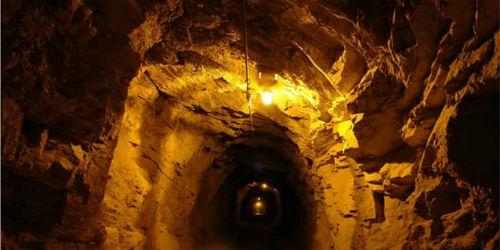D learns how ice cooling in these types of spaces allows for more sustainable productivity and consolidation of profits.
learns how ice cooling in these types of spaces allows for more sustainable productivity and consolidation of profits.
by Pierre Brisset*
The deepest mines in the world are located in South Africa. Faced with the challenge of responding to the demand for minerals at a lower cost, several mines turned to ice technologies to control heat at low extraction levels. Modern ice cooling systems enable acceptable working conditions underground, enhanced safety and increased productivity and dramatic energy savings.
This article describes the most recent ice installations in mines and the positive results obtained.
Heat problems in underground facilities and mine cooling: Heat and humidity are constant problems and limiting factors in underground mines. At a great depth, the temperature of virgin rock can exceed 60 °C. Add to this the heat produced by the excavation, and working conditions become very critical for miners, with detrimental effects on their health, safety and performance.
The thermal limit for normal cognitive performance in underground environments is below 28°C wet bulb. Beyond this threshold, productivity declines, and at the same time the risk of injury and heat stroke rapidly increases. Therefore, cooling plays a very important role in the management of deep underground mines.
Include ice in the overall mine cooling strategy: There are significant differences between the different mines and therefore there is no optimal solution that applies to all underground mines with high temperatures. The best strategy usually results from combining various cooling methods with air and water, sometimes both at the surface and underground.
However, below 1,000 meters deep, water and air cooling methods quickly reach their limit. This is where ice technology becomes a valid alternative or complement.
As heat loads increase with depth, the ability to remove heat underground becomes more limited. The flow of water mass that must be introduced from the surface to cool deep mines and the associated electricity costs to pump it back to the surface are enormous. Similarly, the circulation of cold air involves the construction of expensive airways. Additionally, the efficiency of surface coolers is affected by thermal transfer between the surrounding hot environment to lower levels (cooled water) and/or by increased self-compression temperature (heat gains related to increased pressure as the air drops, depending on the Joule-Thomson effect).
Ice is colder than water or air conditioning and has a much higher potential for mass cooling (latent melting heat of 333 kJ/kg). It descends through the PVC pipe at a higher speed (2 km in 90 seconds) and still reaches the different levels of the mine at 0°C, with minimal heat loss. These unique properties make ice an attractive and energy-efficient cooling medium for the overall cooling strategy of deep-sea underground mines, especially when viewed early on.
In fact, once a mine reaches 1,000 meters, switching from one strategy to another is not always possible. Initial choices may render it inappropriate to implement other solutions at a later stage if ice systems were not contemplated in the overall strategy from the outset, depending on the life expectancy of the mine.
Ice cooling systems
Ice was one of the first methods of temperature control in underground mines.
By the end of the nineteenth century, naturally produced blocks of ice were already being transported in extraction vehicles to cool mines in North America. The method, somewhat primitive, was soon replaced by cooling systems with water on the surface, pumping water into the mine. However, the flow of water mass introduced to underground mines is huge and the electricity costs involved in pumping a thousand tons of water daily over several kilometers is a major disadvantage.
Thanks to the arrival of a new generation of modern cooling systems with ice plants, the ice cooling system was again taken into account by several African mines. After obtaining uneven results with liquid ice, very encouraging results were obtained with solid ice (98% frozen mass fraction).
Simply put, ice systems:
- Significantly decreased temperatures in the heart of the mine,
- They radically reduced the flow of water mass that is pumped to the surface,
- They overcame the limitations of underground heat removal,
- Provided megawatts of cooling,
- Saved pumping energy,
- They allowed thermal storage.
These benefits stem from the unique physical property of ice. Moreover, successful implementation on the ground was facilitated by the refrigeration industry's ability to design low-cost prefabricated plants that are more modern and energy efficient and reliable.
Note: In the next edition we will share the second part of this interesting article.
* Pierre Brisset is a representative of the company KTI Ice Applications, he can be contacted by email: [email protected]














